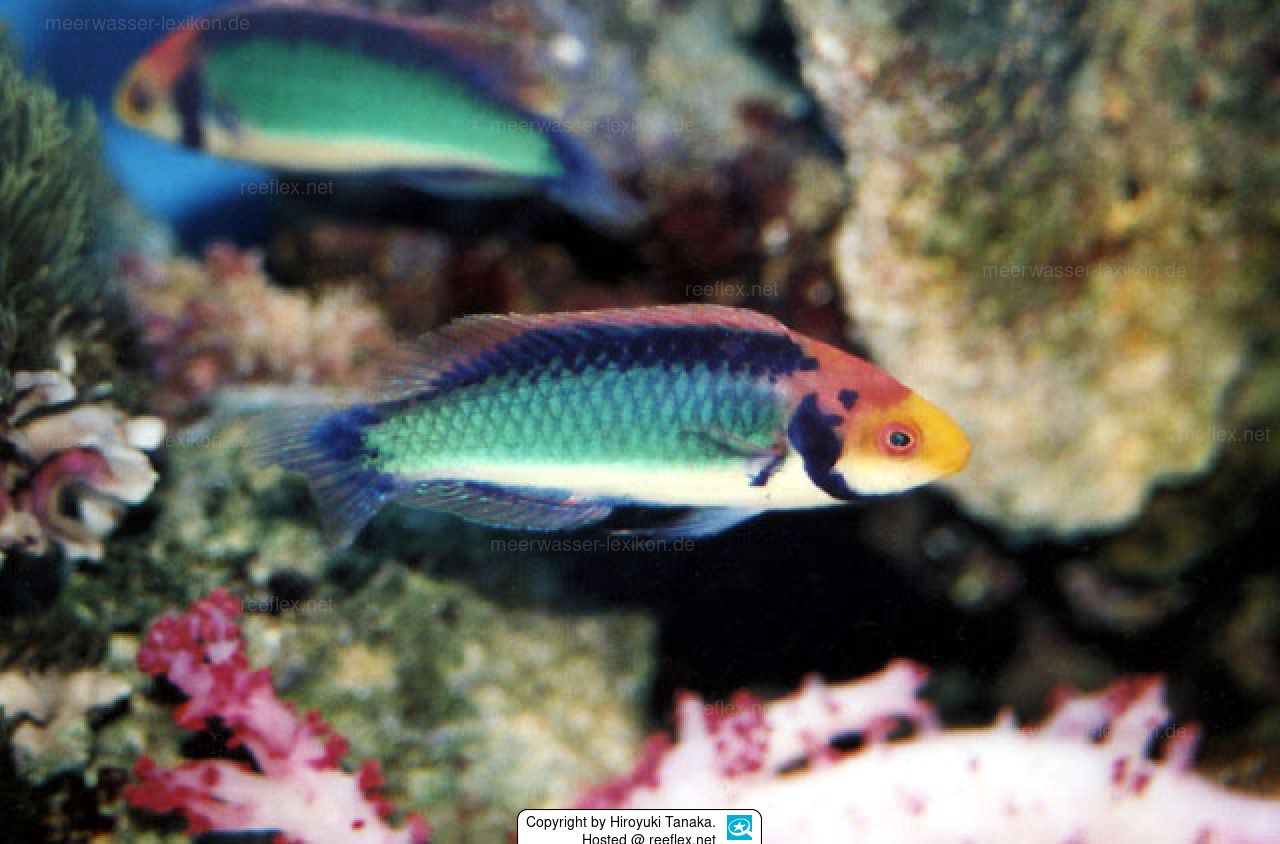Info
Cirrhilabrus aquamarinus
The two species in review belong to the Cirrhilabrus cyanopleura complex which should a gradient and a lot of overlap in their color patterns which has made it challenging to determine where one species ends and another begins. The biggest surprise of the new paper is the redescription of the fish once commonly known as C. solorensis, the red head fairy wrasse, with teh very aptly chosen new name of Cirrhilabrus aquamarinus.
The nine species in the cyanopleura complex are mostly found in the heart of the Coral Triangle with the nominal Cirrhilabrus cyanopleura being the most widespread ranging as far as the Andaman Islands in the west and north to Japan with C. luteovittatus being the most isolated in the western Pacific Ocean but most of the others have much more limited ranges. Surely it will take some time for the hobby and general wrasse fanciers to get used to the new name of the red head fairy wrasse but the memorable designation of aquamarinus it should be much easier to recall the ‘aqua marine’ fairy wrasse.
Jumping guard
A jumping guard prevents (nocturnal) fish from jumping out.
Wrasses, blennies, hawkfishs and gobies jump out of an unprotected tank in fright if their night rest is disturbed, unfortunately these jumpers are found dried up in the morning on carpets, glass edges or later behind the tank.
https://www.korallenriff.de/en/article/1925_5_Jump_Protection_Solutions_for_Fish_in_the_Aquarium__5_Net_Covers.html
A small night light also helps, as it provides the fish with a means of orientation in the dark!
The two species in review belong to the Cirrhilabrus cyanopleura complex which should a gradient and a lot of overlap in their color patterns which has made it challenging to determine where one species ends and another begins. The biggest surprise of the new paper is the redescription of the fish once commonly known as C. solorensis, the red head fairy wrasse, with teh very aptly chosen new name of Cirrhilabrus aquamarinus.
The nine species in the cyanopleura complex are mostly found in the heart of the Coral Triangle with the nominal Cirrhilabrus cyanopleura being the most widespread ranging as far as the Andaman Islands in the west and north to Japan with C. luteovittatus being the most isolated in the western Pacific Ocean but most of the others have much more limited ranges. Surely it will take some time for the hobby and general wrasse fanciers to get used to the new name of the red head fairy wrasse but the memorable designation of aquamarinus it should be much easier to recall the ‘aqua marine’ fairy wrasse.
Jumping guard
A jumping guard prevents (nocturnal) fish from jumping out.
Wrasses, blennies, hawkfishs and gobies jump out of an unprotected tank in fright if their night rest is disturbed, unfortunately these jumpers are found dried up in the morning on carpets, glass edges or later behind the tank.
https://www.korallenriff.de/en/article/1925_5_Jump_Protection_Solutions_for_Fish_in_the_Aquarium__5_Net_Covers.html
A small night light also helps, as it provides the fish with a means of orientation in the dark!







 Dr. Hiroyuki Tanaka, Japan
Dr. Hiroyuki Tanaka, Japan














































































